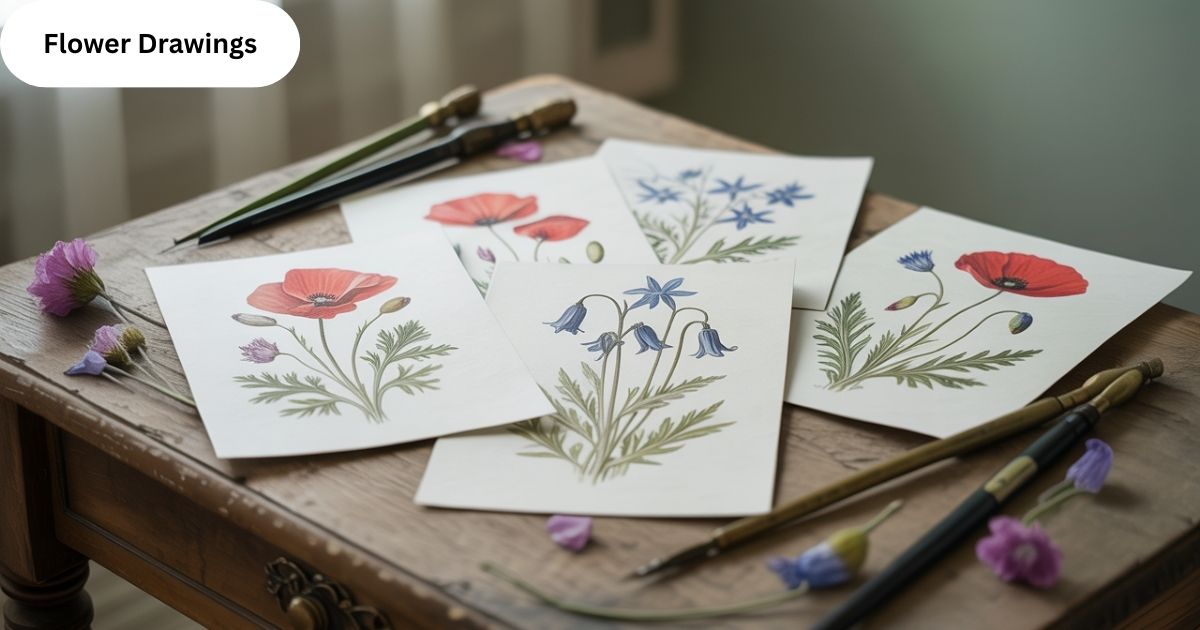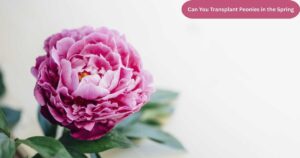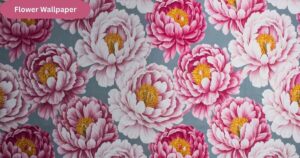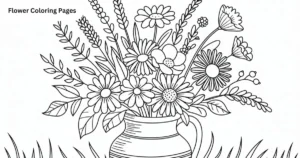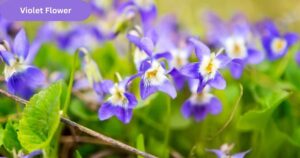Flower drawings have been a source of inspiration for artists for centuries. These intricate depictions capture the essence of nature, making them a timeless form of artistic expression. From botanical illustrations to abstract interpretations, flowers offer a wide range of possibilities for creativity. Their beauty and symbolism make them a popular subject in various art forms, from sketches to digital art.
Artists often use flowers as a way to express emotions and explore different techniques. The delicate petals, vibrant colors, and intricate patterns provide an endless array of visual interest. Whether it’s for a simple sketch or a detailed masterpiece, flower drawings allow artists to delve deep into the natural world and bring its beauty to life on paper.
Read More: Flower Coloring Pages
The History Behind Flower Drawings
Flower drawings have a rich history, dating back to ancient civilizations. Early cultures, such as the Egyptians and Greeks, used flowers in their art to symbolize various themes like love, fertility, and beauty. The Renaissance period saw a surge in botanical illustrations, where flowers were meticulously drawn to document new discoveries in plant life. These drawings played an important role in advancing scientific knowledge about plants.
Over time, flower drawings evolved with the changing art styles. From the detailed realism of the Renaissance to the more expressive and stylized representations of the Impressionist movement, flowers have always held a central place in art. Artists like Claude Monet and Georgia O’Keeffe brought flowers into the spotlight, interpreting them through their unique artistic lenses.
Popular Flower Types in Drawings
There are many different flowers that artists choose to draw, each with its own unique characteristics. Roses, daisies, tulips, and lilies are among the most commonly drawn flowers, each symbolizing various emotions and concepts. Roses, for example, are often linked with love and passion, while daisies represent innocence and purity.
The choice of flower often depends on the artist’s intention and the emotions they want to convey. Some artists prefer the softness and simplicity of a daisy, while others opt for the dramatic flair of a rose. Irises, sunflowers, and orchids also make popular subjects due to their bold colors and distinctive shapes.
Techniques Used for Drawing Flowers
Drawing flowers involves several techniques that bring the natural beauty of the subject to life. One of the most common techniques is sketching, where light lines are used to outline the basic structure of the flower. This serves as a guide for further detailing and shading. Once the basic structure is in place, artists often add shadows and depth to create a more realistic representation.
Watercolor and pencil shading are two other popular techniques for flower drawings. Watercolors allow artists to capture the delicate hues of flower petals, blending colors to create soft transitions. Pencil shading, on the other hand, is great for adding texture and dimension, especially when focusing on the intricate details of a flower’s petals and leaves.
Flower Drawings as an Expression of Emotion
Flowers have long been symbolic of different emotions and feelings, making them a powerful subject for artists to explore. A drawing of a red rose can evoke passion and love, while a wilted flower might represent loss or sadness. Artists often use the flower’s shape, color, and positioning to convey deep emotions, offering a personal connection between the viewer and the artwork.
Beyond the symbolism of specific flowers, the style of drawing itself can also express emotion. A rough, unrefined sketch may suggest chaos or turmoil, while a smooth, detailed rendering may convey peace and serenity. Flower drawings are not just about representing nature; they are about translating feelings and thoughts onto paper, offering insight into the artist’s emotional landscape.
Flower Drawings in Different Art Styles
A Flower drawings are versatile and can be adapted to suit various art styles. Realistic flower drawings aim to capture every minute detail of the flower, creating lifelike representations. This style often requires a great deal of skill and patience, as the artist must study the flower closely to replicate its true form.
On the other hand, abstract flower drawings take a more creative approach, focusing on shapes, colors, and patterns rather than precise detail. This style allows the artist to interpret the essence of the flower in a more personal and expressive way. Whether in realism or abstraction, flower drawings offer limitless possibilities for creativity.
The Therapeutic Benefits of Drawing Flowers
For many, drawing flowers provides a form of therapy and relaxation. The act of drawing allows individuals to focus their mind, reducing stress and anxiety. The repetitive motions involved in sketching and shading help to quiet the mind and foster a state of mindfulness. This makes flower drawing a popular activity for those seeking to unwind or practice art as a form of meditation.
In addition, flower drawings can boost self-esteem and provide a sense of accomplishment. Completing a flower drawing, whether simple or intricate, can give a person a feeling of pride and satisfaction. The therapeutic nature of drawing flowers also extends to their ability to foster creativity, helping people tap into their inner artistic potential.
Flower Drawings in Modern Art
In contemporary art, flower drawings continue to play a significant role. Many modern artists use flowers to explore themes such as environmentalism, femininity, and the passage of time. Artists like Andy Warhol have even incorporated flowers into pop art, creating iconic works that challenge traditional perceptions of beauty and nature.
Flower drawings in modern art are often seen in various forms, from minimalistic designs to intricate, highly detailed renderings. The flower’s symbolism remains relevant, and it continues to be a popular choice for artists looking to make a statement or evoke particular emotions. As art evolves, the depiction of flowers also adapts to reflect the changing landscape of culture and society.
Conclusion
In conclusion, flower drawings are a timeless and versatile form of artistic expression, allowing artists to explore the beauty and symbolism of nature. Whether through realistic depictions or abstract interpretations, flowers continue to inspire creativity and evoke emotions.
From their rich historical significance to their therapeutic benefits, flower drawings remain a powerful tool for self-expression. As art evolves, the depiction of flowers continues to captivate audiences, making them a central subject in both traditional and modern art forms.
FAQs
What does a fragrant flower symbolize?
A fragrant flower often symbolizes grace, dignity, and inner strength.
Why are fragrant flowers important in culture?
They represent purity, respect, and are used in many spiritual and traditional ceremonies.
Can fragrant flowers help with stress relief?
Yes, their natural aroma can soothe the mind and promote relaxation.
Which flowers are known for both fragrance and elegance?
Peonies, gardenias, and jasmine are popular for their scent and graceful appearance.
How can I grow fragrant flowers at home?
Choose a sunny spot, use well-draining soil, and water regularly for best results.
